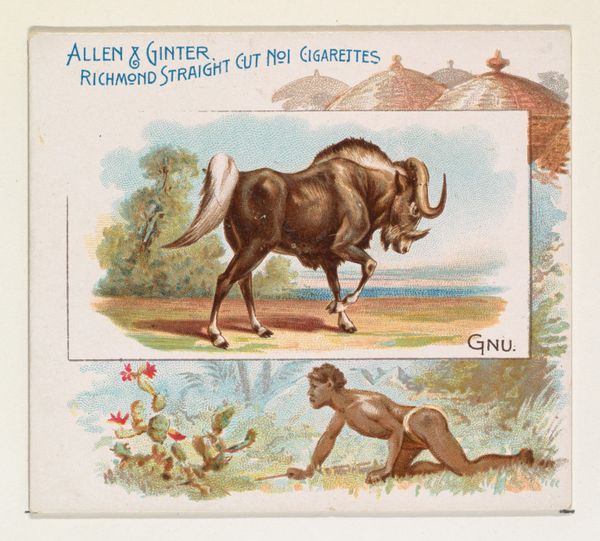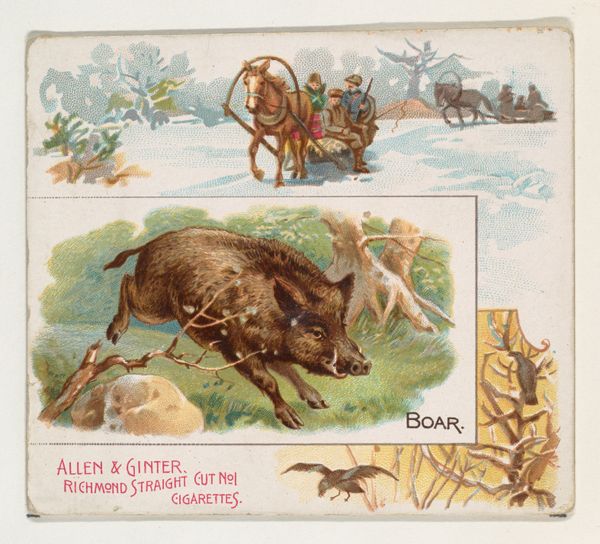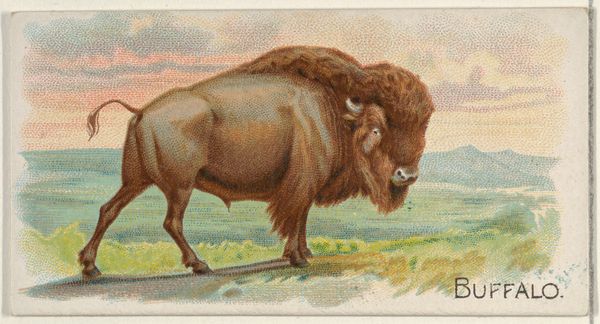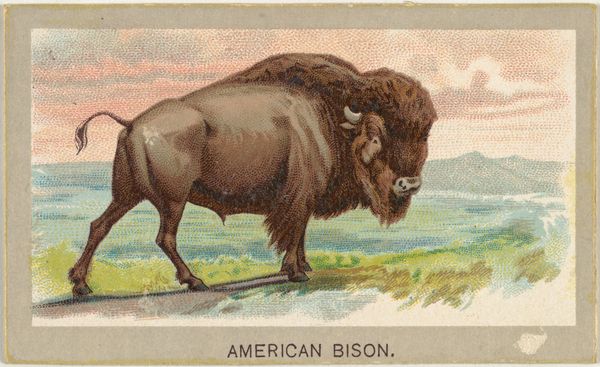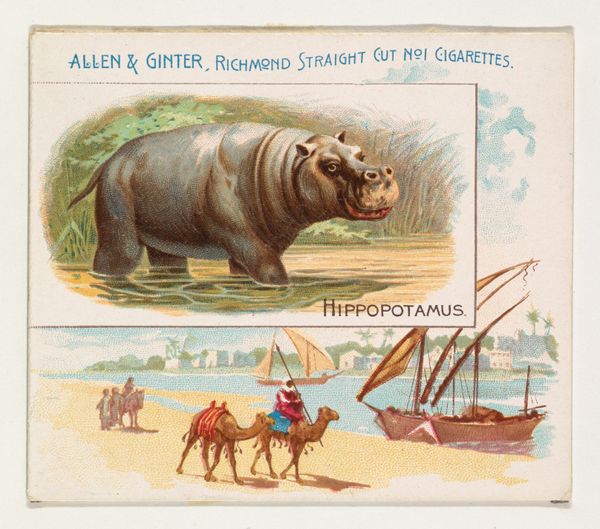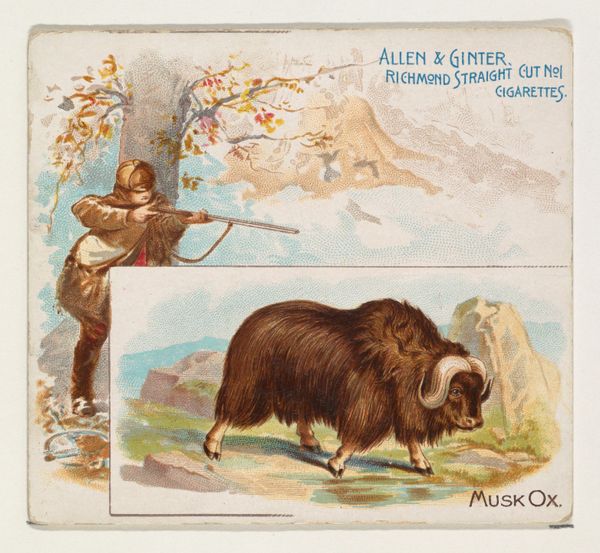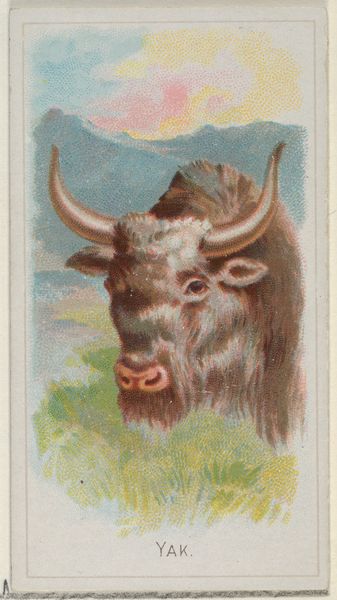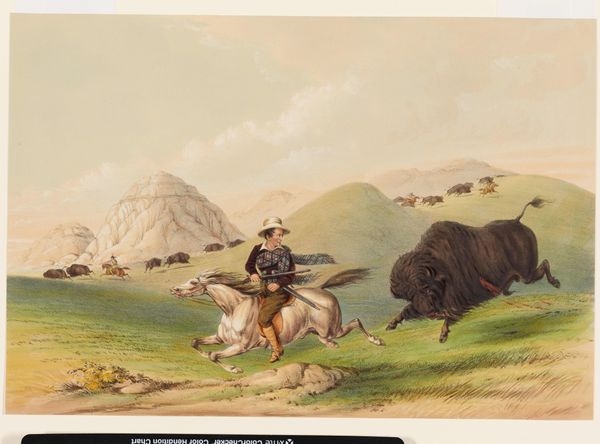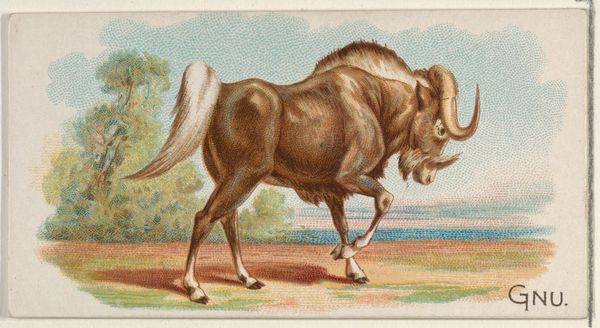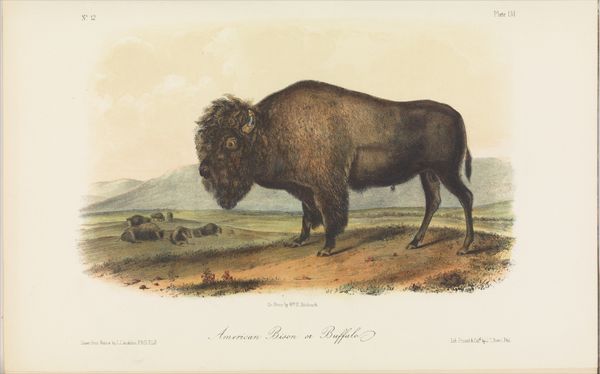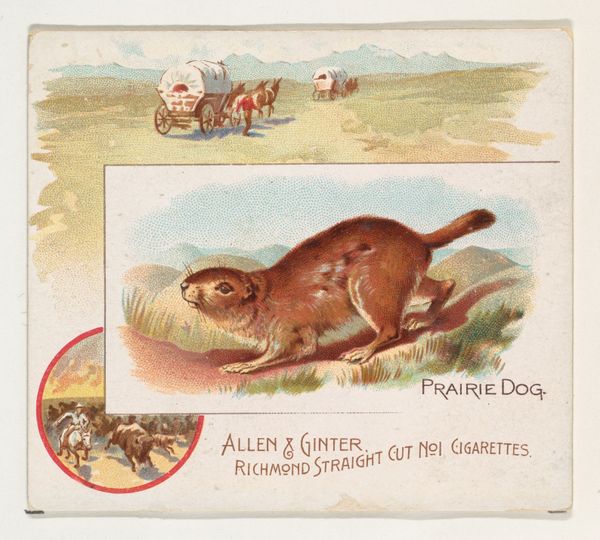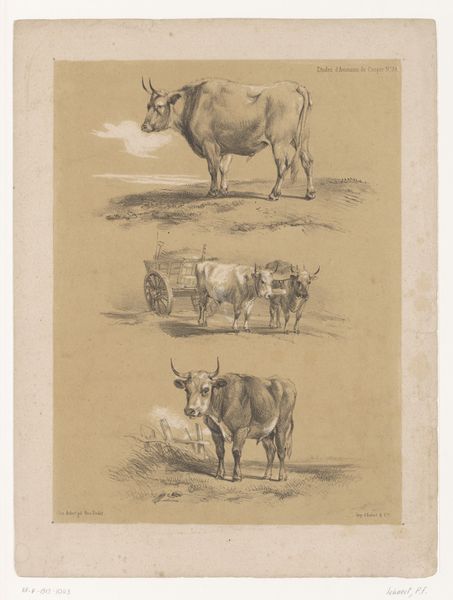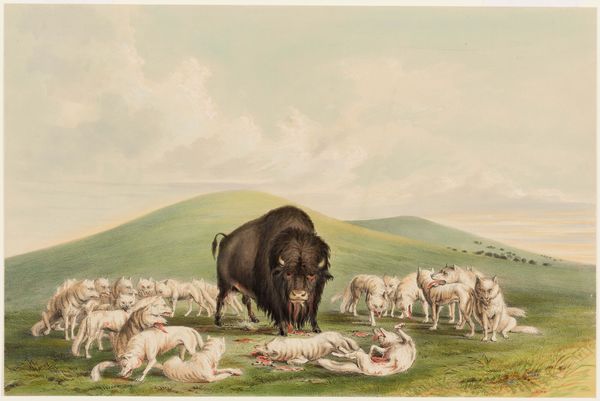
Buffalo, from Quadrupeds series (N41) for Allen & Ginter Cigarettes 1890
0:00
0:00
drawing, coloured-pencil, print
#
drawing
#
coloured-pencil
#
narrative-art
#
pictorialism
# print
#
impressionism
#
landscape
#
figuration
#
coloured pencil
#
folk-art
#
genre-painting
Dimensions: Sheet: 2 7/8 x 3 1/4 in. (7.3 x 8.3 cm)
Copyright: Public Domain
Curator: So, we’re looking at this rather fascinating piece: “Buffalo, from the Quadrupeds series,” dating back to 1890. It’s a colored-pencil drawing and print created for Allen & Ginter Cigarettes. It's giving me a bit of a Wild West, manifest destiny vibe. How do you interpret this work? Editor: It feels very much of its time, doesn’t it? The composition—the buffalo in the foreground, then the wagon trains, even a suggestion of plains native Americans—is really striking. What story is the imagery intended to tell? Curator: Exactly! Consider the context. These cards weren't just art; they were advertisements tucked into cigarette packs. They were mass-produced, consumed, and collected. Think about the narratives they were promoting. Doesn’t this conjure ideas about American expansion, doesn’t it also highlight a certain, shall we say, selective depiction of history? The buffalo symbolizes the wild west, the open frontier. What’s subtly, or not so subtly, omitted from this imagery? Editor: Well, there’s not much explicit depiction of Native Americans themselves; they're kind of implied in the bottom-left, like they are already losing ground. So you are thinking about it in terms of how cigarette companies shaped public perceptions of the West through collectible art? Curator: Precisely! It's about shaping a narrative. A romanticized, marketable version of westward expansion that conveniently ignores the brutal realities of displacement and environmental impact. The politics of imagery are always at play, even in something as seemingly innocuous as a cigarette card. Notice, for instance, how the composition draws your eye toward the “Buffalo,” a branded entity, in contrast to indigenous populations. What impression does that leave you with? Editor: That is unsettling when you think about it. It's like the value of the animal eclipses that of the people whose lives depended on them. I see now it’s not just a picture of a buffalo; it’s a tiny piece of propaganda. Thanks! Curator: Indeed! These cards offer us insight into the complexities of power, commerce, and visual culture at the turn of the century.
Comments
No comments
Be the first to comment and join the conversation on the ultimate creative platform.
